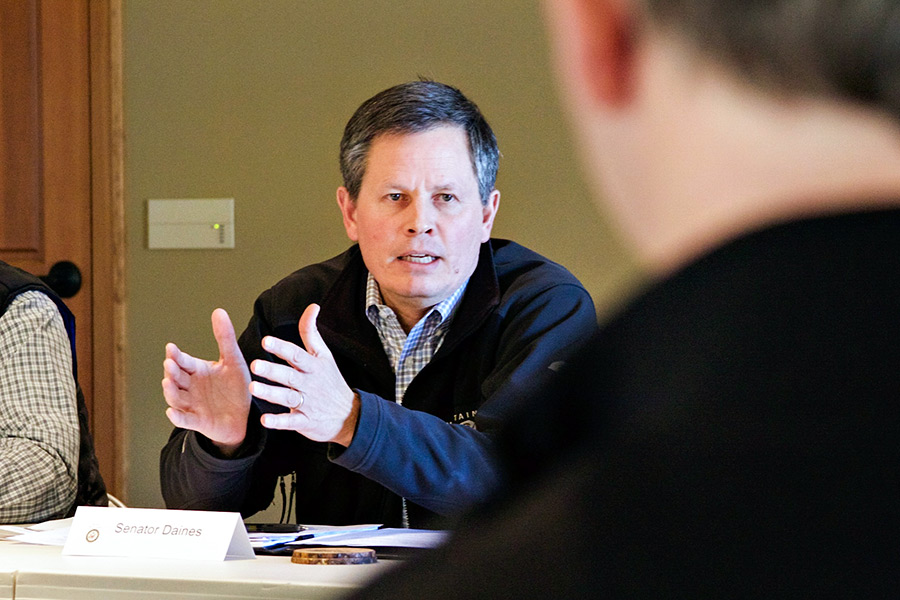Montana Sen. Steve Daines believes Congress can pass forest management reform and send it to the president’s desk before the end of the year.
On Feb. 17, the freshman Republican Senator met with industry and conservation leaders at F.H. Stoltze Land and Lumber Co. in Columbia Falls to talk about management issues within the U.S. Forest Service and how that is impacting local communities.
“There is an appetite to get this done,” Daines said. “Because right now it seems like beetles and forest fires are the ones who are managing our forests.”
Among those in attendance were officials from F.H. Stoltze, Plum Creek Timber Co., Pyramid Mountain Lumber, the Wilderness Society, the National Parks Conservation Association, the Kalispell Chamber of Commerce and local government officials from Sanders, Mineral and Lincoln counties. The visit was one of three roundtable discussions Daines hosted across the state last week, including meetings in Missoula and Bozeman.
Since 1987, there has been an 82 percent decline in timber harvested on federal lands in Montana, according to the U.S. Forest Service, from more than 600 million board feet in 1987 to just over 100 million board feet in 2014. During that same time, 27 wood and paper product mills have closed in the state and the number of people employed in the industry has been cut in half. Those declines have had major impacts on rural communities like Lincoln County, which has had one of the highest unemployment rates in the state in recent years.
Daines attributed the decline in timber production to what he described as burdensome regulations and persistent litigation from environmental groups trying to stop timber sales. In August 2014, F.H. Stoltze laid off 10 people after a timber sale on the Stillwater State Forest was halted in court. Industrial officials say the unpredictable supply of timber has hurt business.
However, some environmentalists say that harvests that are too aggressive can have a negative impact on wildlife and habitat. Environmental groups also point to figures released in 2014 that show the Forest Service met its harvest goals last year in Region One, encompassing Montana.
Also in attendance were two local mill workers, Jeff Mills from F.H. Stoltze and Matt Hannay from Plum Creek.
“The guys and gals out there don’t know if they’re going to have a job in a few weeks,” Mills said. “I’m going to retire in a few years, but there are people in their 30s and they don’t know if they’re going to be working in the industry in the future… There are not a lot of opportunities here for people who don’t have degrees. We in the working class need help.”
Daines and others who attended the meeting said that the only way for any progress to be made on forest reform is for all interested parties to work together. Scott Brennan, the Montana state director for the Wilderness Society, said more often than not people in conservation and the timber industry have more in common with each other than they think.
“We need to bridge divides to solve problems,” he said.
One area that everyone in attendance seemed to agree on was how the U.S. Forest Service should fund firefighting efforts.
Right now, 1 percent of forest fires consume 30 percent of the USFS’s annual budget. There is a push in Washington D.C. for wildland fire suppression to be funded the same way other agencies combat natural disasters, including hurricanes and snowstorms, instead of dipping into the agency’s annual budget. Daines said reforms like that would lead to healthier forests and economies.
“Montanans want jobs that let them stay in the state they love, but they also want to protect the reasons they love this state, like hunting, fishing, camping and hiking,” Daines said.
